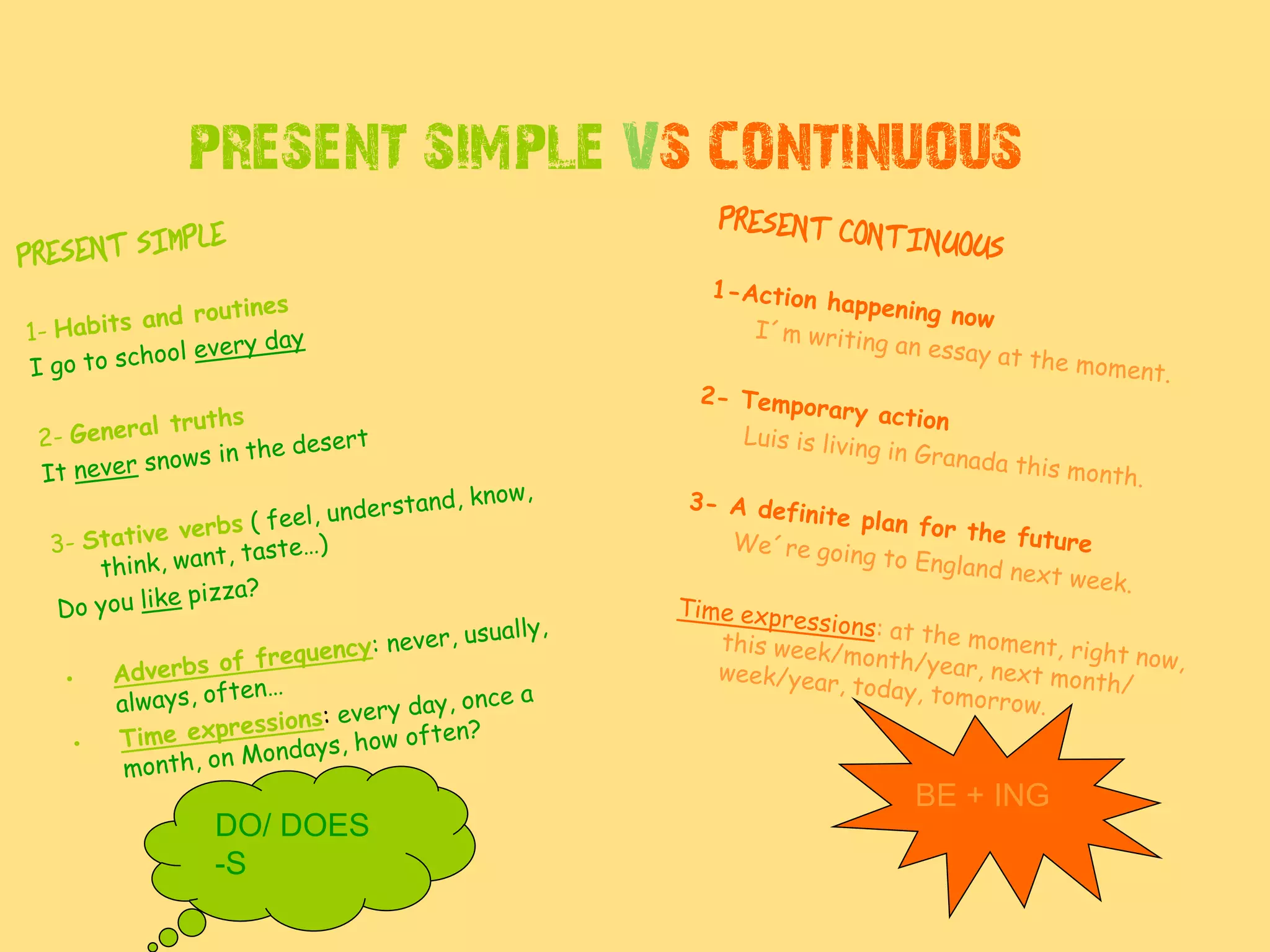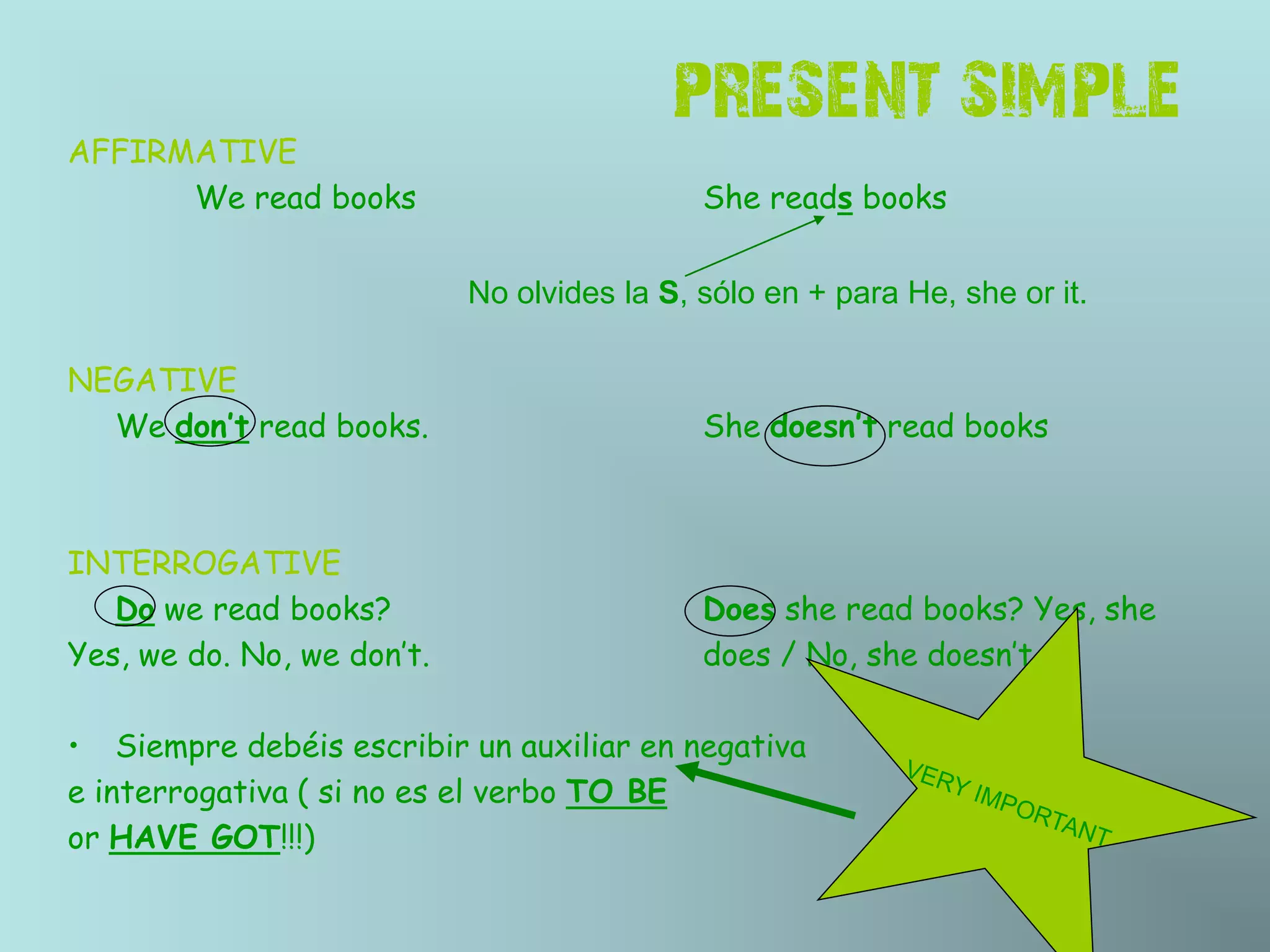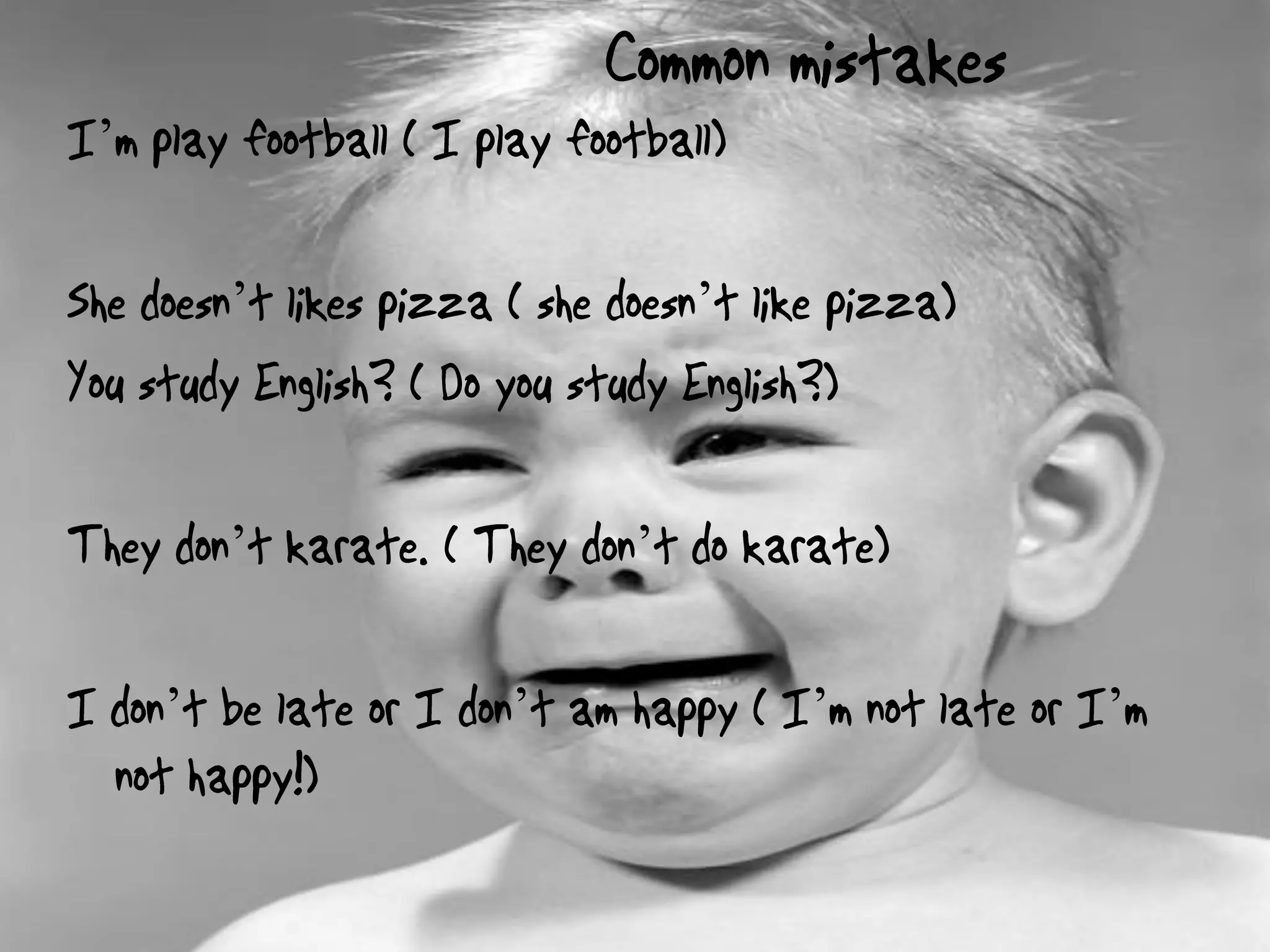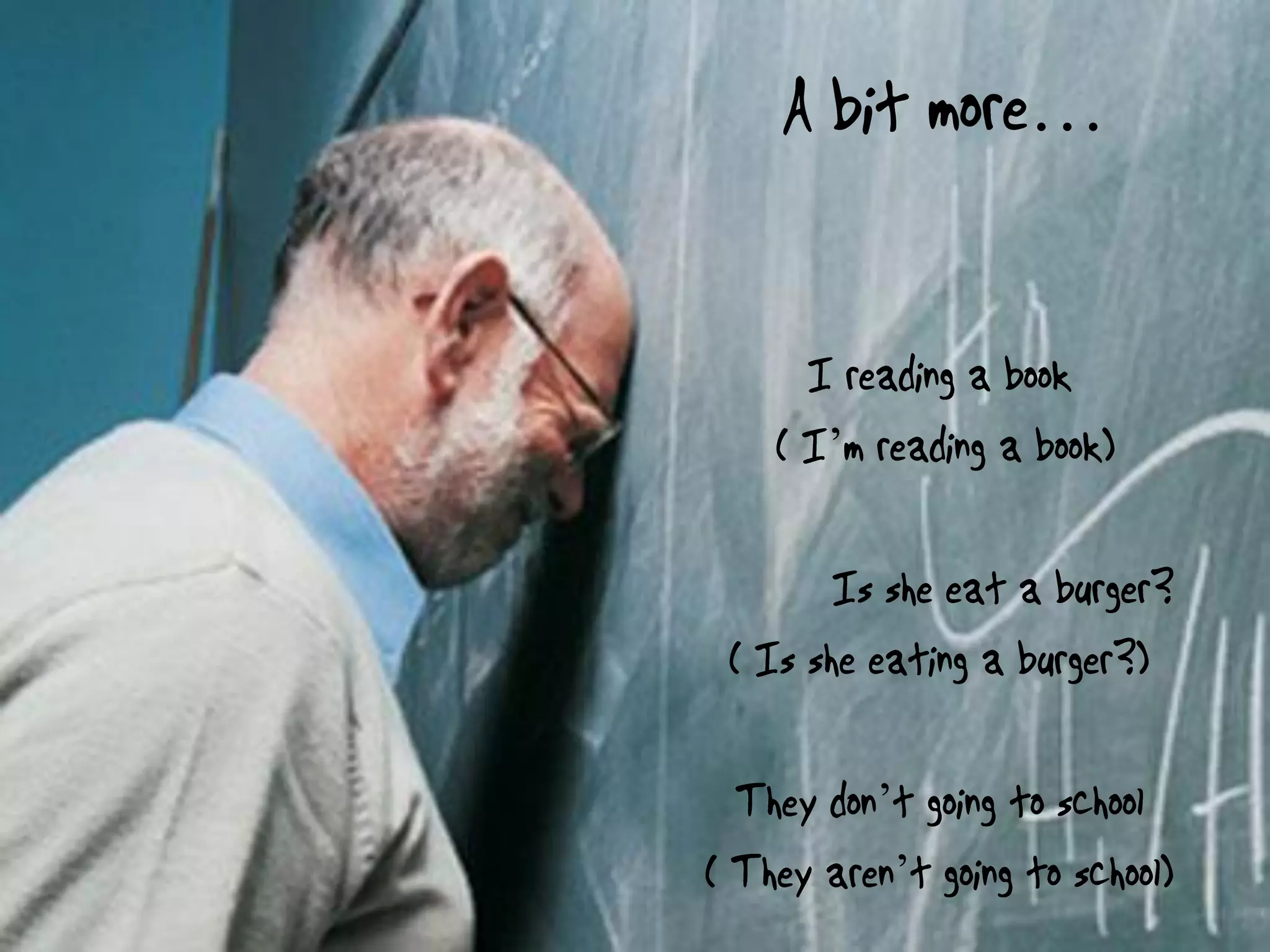Embed presentation
Download as PDF, PPTX






The document compares and contrasts the present simple and present continuous tenses in English. It provides the conjugations for the affirmative, negative, and interrogative forms of both tenses, noting that the present simple is used for habitual or repeated actions while the present continuous emphasizes a temporary state. Key aspects explained are using "do/does" as auxiliaries in simple questions and negatives (except for be/have) and always including a form of to be as the helping verb in continuous forms.





Introduction to the differences between Present Simple and Present Continuous tenses.
Affirmative, negative, and interrogative forms of Present Simple. Note on subject-verb agreement.
Affirmative, negative, and interrogative forms of Present Continuous. Emphasis on using 'to be'.
Empty slides without content.
Empty slides without content.